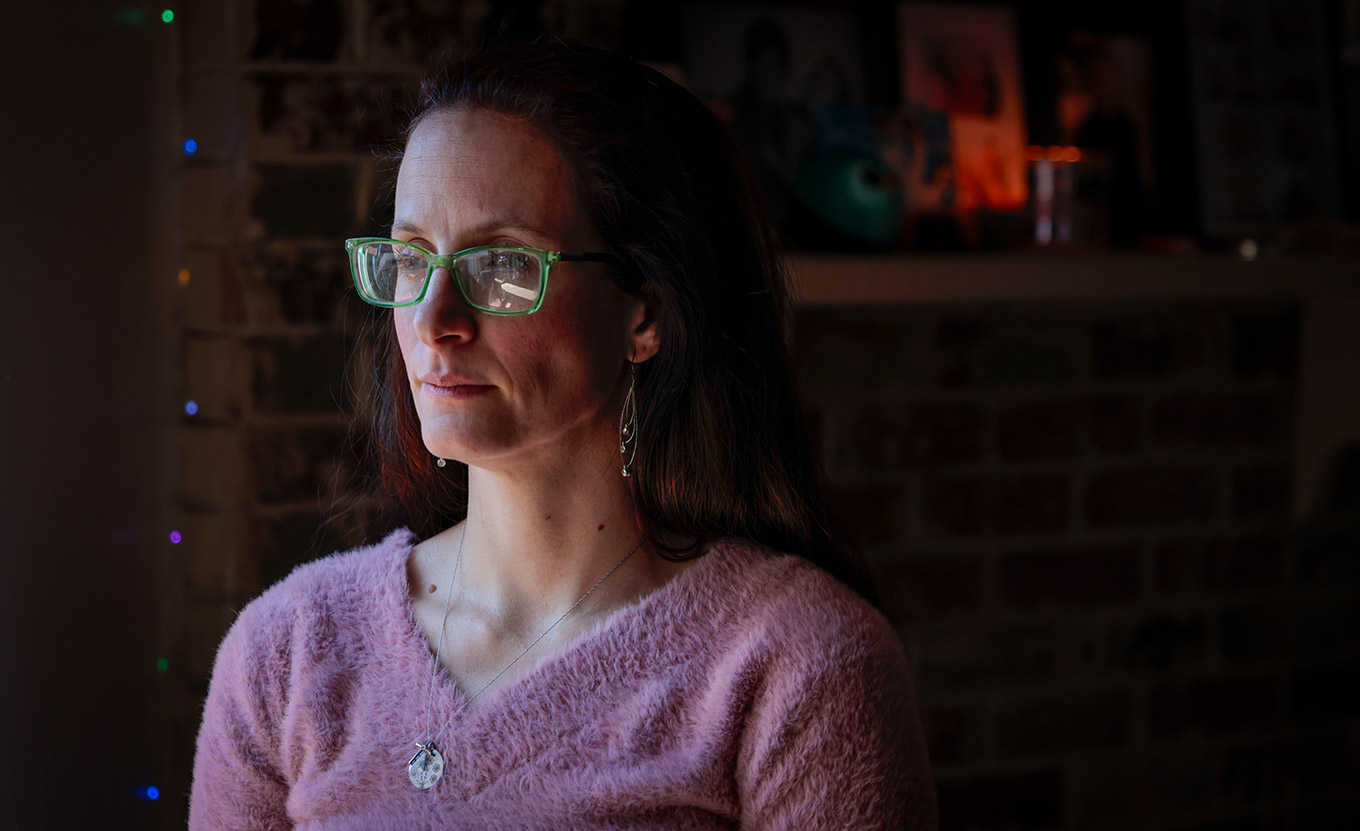
Author and journalist Elisabeth Rosenthal was a keynote speaker at the Colorado Health Institute’s annual Hot Issues in Health conference held in Englewood in December.
Brian Clark/Colorado Health Institute (used with permission)
Author and journalist Elisabeth Rosenthal was a keynote speaker at the Colorado Health Institute’s annual Hot Issues in Health conference held in Englewood in December.
Brian Clark/Colorado Health Institute (used with permission)
Colorado is a divided state. Politically divided, with voters and a legislature that are split along party lines—and then further split within the two major parties. Divided, too, into haves and have-nots; some have gained from the state’s economic boom, while others feel left behind or pushed aside.
At the federal level, divisions like these seem to have made it all but impossible for wide consensus on issues of huge importance to our lives and health: climate change, immigration, health care and taxes.
Are Coloradans similarly doomed to be paralyzed by our differences?
That was a key question on the table at Hot Issues in Health, the Colorado Health Institute’s annual health policy conference, which brings together legislators of both major parties, government officials, policy experts and others to discuss the coming year’s most pressing policy questions. CHI, a grantee of The Colorado Trust, provides data and analysis to policy makers to help them make sense of a stupefyingly complex health care environment in the country and the state.
Michele Lueck, the organization’s CEO, believes there are ways forward in today’s polarized climate.
“If we can carve a tunnel through the Rocky Mountains in Colorado, we can find a way to reach strong health policy decisions,” said Lueck at the launch of the conference.
There are many issues that cut across the lines of division. The opioid crisis is one. CHI researcher Teresa Manocchio and Swedish Medical Center emergency physician Donald Stader, MD, told a grim story of an epidemic. In 1999, there were 108 Coloradans who died of an opioid-related overdose. In 2016, nearly five times that many died.
Doctors are partly to blame, said Stader. Opioids are a terrible drug for most kinds of pain treatment, because of their addictive properties, he said. And yet they continue to be a first-line treatment. Some remarkably effective alternatives are cheap and commonplace: Ibuprofen, for instance. Other treatments—laughing gas, trigger-point injections or acupuncture—aren’t universally offered, or aren’t covered by insurers who pay for opioids without a second thought.
There’s some evidence that changes in prescribing practices, and public efforts like the state’s Prescription Drug Monitoring Program, have contributed to a decline in the abuse of prescription medications. The bad news is that heroin has crept in to take its place, and now contributes to a growing share of deaths.
There are solutions supported by evidence, said Stader. Medication-assisted treatment, for instance, has become more widely available—though gaps remain.
Meanwhile, initiatives like clean-needle exchanges and improving access to the drug naloxone, which reverses the effects of an opioid overdose, can keep people alive until they are in a position to seek treatment, and prevent the spread of Hepatitis C and HIV. These efforts—known as harm reduction—were once very controversial but are gaining wider support.
Colorado Attorney General Cynthia Coffman, speaking at a panel of Republican gubernatorial candidates, rebuked fellow candidates Victor Mitchell and Doug Robinson, who said they’d like to study the data on harm-reduction efforts before making a strong push for things like needle exchanges across the state.
“I think the data is dead bodies washing up in Cherry Creek. I think it’s people found with needles in their arms on Colfax. I think it is dead children being buried by their parents because they’ve overdosed in their bedroom at age 15,” said Coffman. “We have data. We have a crisis.”
A bipartisan committee of Colorado lawmakers studying substance abuse disorders has unveiled six bills for consideration in the next state legislative session, including bills that would create a pilot program for a supervised injection facility in Denver, another that would train health and law enforcement professionals on opioid prevention, and one that would expand residential treatment for substance abuse.
In other areas where the pain is widely felt, solutions are nonetheless contentious. Take the cost of medical care. Premiums are high, and deductibles are out of reach for too many, while a disproportionate share of taxpayer dollars go to health care over other social services. Is the solution Medicare for all? A public insurance option? High-risk pools? Consumer-driven care? Your answer may depend on your party affiliation.
The keynote speaker, Elisabeth Rosenthal, offered not a policy solution but an explanation of how we got here. The journalist and author of the recently published book An American Sickness: How Healthcare Became Big Business and How You Can Take It Back, explained how a medical system guided by market demands has resulted in dysfunctional care.
The rules of the market can be catastrophic when they’re applied to health care, Rosenthal found. In our system, a lifetime of treatment is preferable to a cure; prices will rise to whatever the market will bear; and amenities and marketing matter more than good care. She quoted a doctor who told her that “If the incentives we have now had been around when Salk invented the polio vaccine, we’d wouldn’t have a polio vaccine. We’d have iron lungs in 10 different colors with iPhone apps.”
The business motivations of health care in our country explain why colonoscopies, for instance, cost thousands of dollars in the U.S., and a fraction of that in other countries. They explain how a pharmaceutical company charges $2,319 a month for a drug that can be effectively approximated with over-the-counter drugs Pepcid and Motrin for $11 a month, and how a hospital can charge $100,000 for an infusion of an arthritis treatment that costs a fraction of that—by offering it in a nice room.
There are things we can do as consumers. We can ask our doctors if treatments are necessary and if generic or other, less expensive options are available. At the hospital, we can ask the various professionals that stop by the bedside why they’re there. We can make a note on consent forms that we only agree to in-network procedures.
This is how we begin to make inroads. Asking for good federal policy to decrease our medical costs? That may be more like moving mountains.


